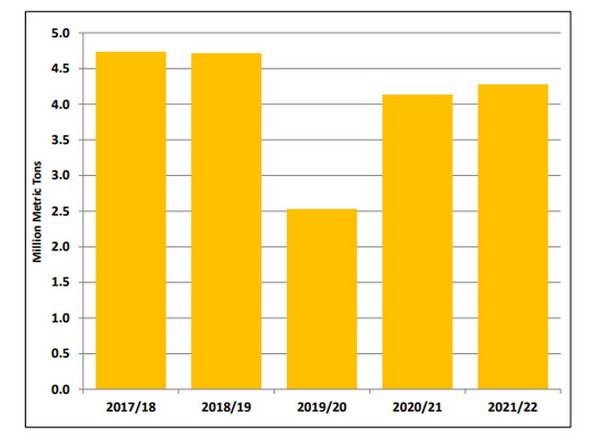Mexico orange production is forecast at 4.3 million tons, up 3 percent from the previous year due to a return to normal weather conditions in Veracruz. The 2019/20 drought affected orange production more than other citrus, as many orange trees are old and require more energy to produce fruit.
Mexico produces three main orange varieties: Valencia, which is favorable for juice production; Lane Late, which is mainly consumed fresh; and Navelina, which is consumed fresh and is also used for juice production. Oranges are harvested mainly from November to May.
Oranges are the most prevalent citrus fruit planted in Mexico, with the state of Veracruz accounting for nearly half of the total harvested area. Its high elevation, nutrient‐rich soil, and high humidity make it ideal for citrus production. Other significant producer states include Nuevo León, Puebla, Sonora, and Tamaulipas. Additionally, many small producers lack irrigation technology and have poor crop management practices, exacerbating production challenges.
Producers, many of whom are small‐scale (3 hectares or less), have little liquidity or government assistance to invest in tree maintenance activities such as leaf removal and fertilization, both necessary to maintain soil health for optimal production. In Veracruz, only 3 percent of orange planted area, typically owned by large juice production businesses, utilizes sophisticated irrigation technologies and regular fertilizer application.
Click here to read the full report.
Source: apps.fas.usda.gov

